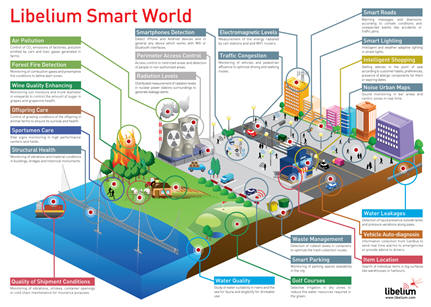From the dWb website


Your business needs to be responsive to the marketplace by exploiting the IT capabilities of mobility but.......
You have will need to change the decision making processes and the supporting business structures ....
You need to find ways to securely segregate the personal data from the business data ....
The information both personal and business will be exploited in many ways (both good and bad) with unknow consequences ...
What do we have to do to ensure that the benefits of mobility still fit into a balanced work-life world?
Feature Article
Headlines
from CES 2015 include Samsung CEO’s vision of an Internet of Things (IoT)
that powers homes with smart thermostats and water meters. Last month, the
UK Government published a strategy for IoT. This vision is at variance to
the devices on show in Las Vegas. Rather than focusing on consumer
electronics, the UK is experimenting with new sensor systems for urban
infrastructure: bins in the park that signal when they are full and
parking spaces that know when they are occupied.
Last year
global consumer electronic sales have fallen by 1%. Consumer products –
like smart toothbrushes – are an example of the tendency to solve trivial
problems rather than important ones. Urban infrastructure solutions are
less exciting than a smart watch, but they will improve the community
environment. Below is a graphic that shows the Smart World opportunities.

The Internet of
Things describes a world in which everyday objects are connected to a
network so that data can be shared and ultimately processed. IoT is as
much about people as the inanimate objects. We already carry ‘smart’
phones although a phone is not smart - they assist in making smarter
decisions. Soon we will be carrying and wearing sensors that measure our
physical condition and how we move around our living environment.
The Internet of
Things has the prospective to have a greater influence on society than the
first digital revolution. There are more connected objects than people on
the planet. The networks and data that flow from them will support an
extraordinary range of applications and economic opportunities. However,
as with any new technology, there is also the potential for significant
challenges especially breaches of security and privacy have the greatest
potential for causing harm. With billions of devices being connect
together what can people to do make sure that their information is
accurate and stays secure?
The new rule for the future is going to be, “anything that can be
connected, will be connected.”
A question is why you would want so many connected devices talking
to each other?
Another question is how will the network handle all these
connections?
And a final question is how will all this happen securely?
The reality is that the IoT allows for virtually endless opportunities and
connections to take place, many of which we can’t even think of or fully
understand the impact of today. It’s not hard to see how and why the IoT
is such a hot topic today.
The main issue that many companies are going to be faced with is around
the massive amounts of data that all of these devices are going to
produce. Organisations will need to work out ways to store, track,
analyse, and make sense of the vast amounts of data that will be
generated. Now that really is BIG DATA
J